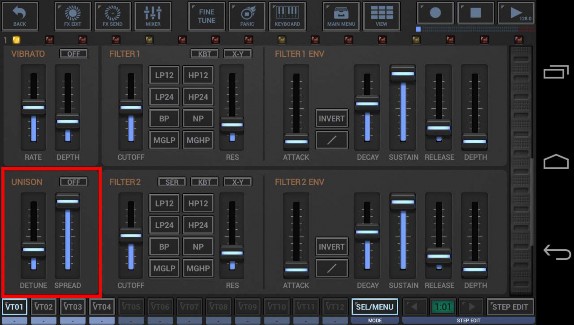
< Previous | Contents | Next >

The effect of unison is simply to multiply the signal which is being produced by the synthesizer and to detune each signal against each other (just like detuning oscillators). This creates a much bigger sound, especially by additionally panning the signals against each other.
Using the Unison with sawtooth waveforms lets you easily create the typical “Supersaw” sound known from Roland Synthesizers (also known as “Hypersaw” from the Access Virus TI-line). To make this effect even more significant, combine the Unison with the Chord Memory Feature (see Chapter: Chord Memory).
When you create a memorized chord with 4 voices (C2, C3, C4 and C5), and apply Unison at level 5x to the sound, then each piano key plays actually 4x5 = 20 voices, each detuned and panned against each other. The result sounds huge and has massive stereo-wide effect.
A true Unison like the one built into the VA-Beast Synthesizer is a CPU intensive effect. Since the Unison (if enabled) creates multiple detuned signals, the creation of each signal uses its own CPU time. This means in numbers: If you use the 5x setting, then the creation of the sound requires around 4 times more CPU power than the same sound without Unison enabled.